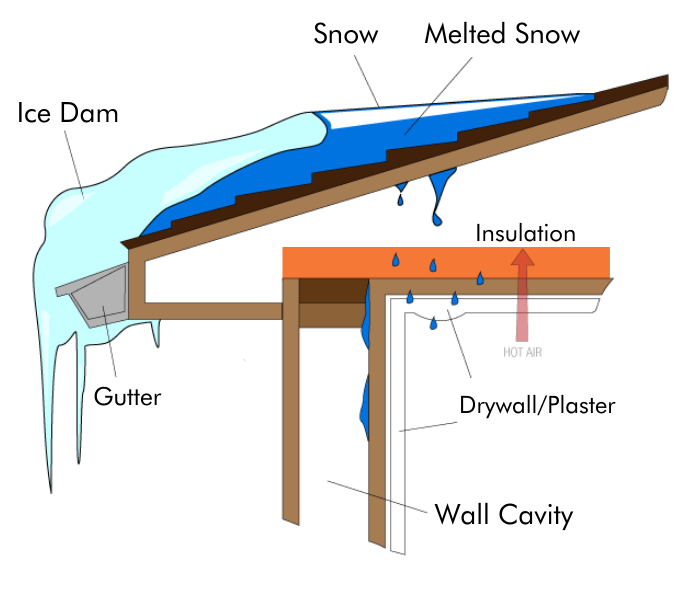How Can Ice Dams Damage Your Home?
10/15/2020 (Permalink)
Ice dams form when the warmth of your roof causes snow to melt, refreeze, and forms a large block of ice at the edge of your roof. This cycle continues until the ice dam melts away in warmer weather - but we wouldn’t recommend waiting for that. Ice dams can cause major damage to your home when they aren’t prevented or removed.
How Ice Dams Cause Damage To Your Home
- Roof Damage - The weight of a mass of ice on your roof can be enough to cause it to slag or slope over time. This may be especially true if your home experiences ice dams every winter.
- Roof Leaks - As snow melts, it makes its way between the shingles of your roof and then refreezes and expands. This causes the shingles to lift and loosen. This exposes the roof felt of your home and allows water to freely flow into the interior of the roof and into the attic.
- Ceiling Water Damage - As roof leaks become worse over time from your ice dams, water will eventually make its way through the floor of your attic and through the ceiling of your living space. This may be gradual, with you only noticing when the water leak has begun to produce water stains or spots on ceilings.
- Bubbling or Peeling Paint - Water seeping down through the walls from the attic can cause paint to bubble or peel. This is usually a major indication of a water leak somewhere in your home.
- Buckling Ceilings or Floors - As water penetrates your home, it may compromise its structural integrity. When moisture reaches the subfloors in your home, it causes them to buckle, sag, or sink as the water causes the building materials to soften.
- Warped Walls - When drywall or sheetrock absorbs moisture from a water leak, walls may begin to visible bend or buckle. When pressing on the affected walls, they may feel soft, spongey, or bendy.
- Mold Growth - Excessive moisture creates the perfect breeding ground for mold in your home. Constant or unaddressed leaks from ice dams provide the environment mold needs to grow.
How Do You Get Rid of Ice Dams?
There are many DIY recommendations for removing ice dams across the web - but we wouldn’t recommend most of them. Many of these tactics can damage your roof even further or are not safe to do yourself (such as getting up on an icy roof and picking the ice off). So what should you do?
Look for a professional for proper ice dam removal.
When you use a company that specializes in removing ice dams, you can expect them to get the job done without doing any damage to your roof or even getting on it. Most of these companies use steam machines that are high temperature and low pressure to melt ice off your roof without impact. This will help save your shingles and ensure no roof leaks.






 24/7 Emergency Service
24/7 Emergency Service
